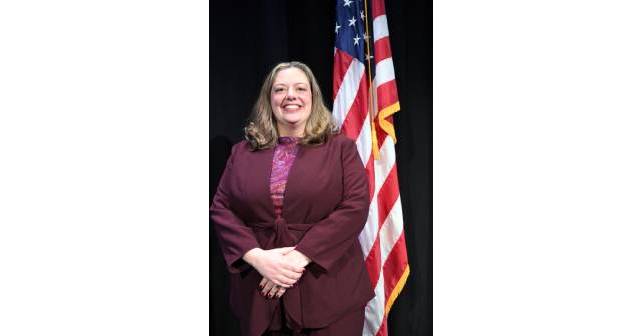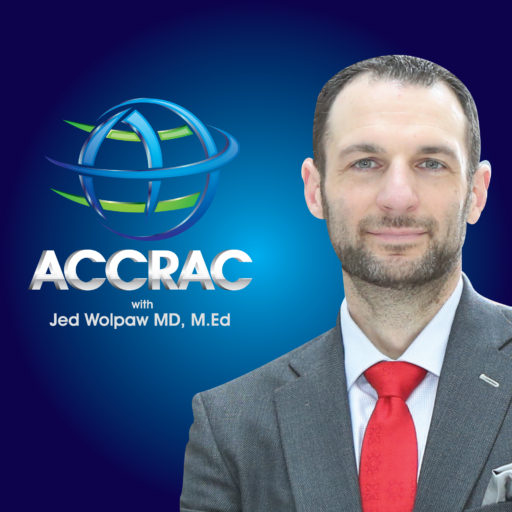
Twice a year, the ACEP Now Medical Editor-in-Chief speaks with the ACEP President. This conversation between Cedric Dark, MD, MPH, FACEP, and Alison J. Haddock, MD, FACEP, serves as a year-in-review as her presidency ends this month in Salt Lake City.
Dr. Cedric Dark: You came into office on a platform of physician autonomy a year ago. What do you think has been your greatest single accomplishment on that front?
Dr. Alison Haddock: This is tricky because of the complexities of these issues. It’s hard to get a single thing done. You also need to take the opportunities that come to you as a leader. I would say that our biggest areas of progress are the ongoing activities of the work group focused on employer closure. That group has been looking at the fact that NES Health and American Physician Partners both happened and were highly detrimental to the individual emergency physicians working under those groups—whether they were employees or 1099s. We have a team evaluating what the College can do to help protect emergency physicians in similar situations in the future.
We know there will always be turnover in physician employers, so we are working on ways to ensure that no one is left without pay for shifts they’ve worked or without tail coverage. Tail coverage is especially high on my mind. We’ve explored what is needed in terms of state advocacy and state law to prevent these gaps, and how we can hold employers accountable when contracts specify tail coverage.
A broader conversation includes other autonomy-related issues like non-competes. I’m happy to see progress on non-competes both at the state level and with a federal ban being introduced. These contracts limit a physician’s ability to change employers, which is a loss of autonomy. Emergency physicians, whether in academic hospitals, private equity groups, or any other setting, should not be bound by non-competes. I’m proud of our progress in those areas, even if it’s incomplete. There is still much to be done.
Dr. Dark: One of the things I think some people are looking at to improve their autonomy has been unionization. Over the past couple of years, we’ve featured stories about emergency physician groups that went on strike, or residency programs that nearly did. We’ve also covered rules around unionization. I’m curious to hear your view on the pros and cons of unionization for emergency physicians.
Dr. Haddock: I think unionization is an option emergency physicians need to know more about and be able to consider, depending on their employment situation. We know that partnership groups can’t have unionized members. If you’re a partner, you can’t be in a union, so seeing the growth of those groups in order to restore autonomy is wonderful. But if you’re not in a position to be a partner, unionization can be a way for individual emergency physicians to gain leverage with their employers to secure better compensation and benefits.
I was excited to see that the group in Oregon, which finalized its contract, negotiated not just substantial raises but also improvements in the working environment. One of the key items negotiated was about limiting how much emergency physicians are pulled from the emergency department (ED) to provide care elsewhere in the hospital. It’s not just about pay. It’s about whether you can focus on your job, which is predominantly taking care of patients in the ED, and only responding to calls outside the ED for truly emergent situations. That kind of negotiation can help reduce burnout and the feeling of lost autonomy. The union also negotiated increased shift differentials for night shifts. Previously, nocturnists weren’t paid enough extra for those hours, and now that’s been addressed. That’s a win.
Dr. Dark: Alright, let’s talk about private equity. Everybody’s talking about it these days. Just this week I saw that a beloved, local Houston doughnut shop, Shipley’s, was acquired by a California private equity firm. It went from one private equity firm to another.1 The doughnut shop cited “transformational growth” as a benefit of the private equity partnership. My question to you is, “Why aren’t doughnuts and doctors the same kind of commodity?”
Dr. Haddock: I love that question. We’ve seen many challenges with treating health care like a commodity. Emergency physicians choose this specialty because we believe in the mission to care for anyone, anytime, for any problem. The private equity model is focused on short-term profits, which doesn’t align well with that mission.
Many emergency physicians working for private equity-owned companies feel their work is undervalued. This year, I’ve been giving a talk across the country titled “Financialization and Emergency Medicine.” It’s about the corporatization and market forces that have transformed our field over the last 20 years. Evidence on how private equity affects quality and cost of care is mixed, especially in emergency medicine. We need more data and research.
But consolidation isn’t driven solely by private equity. The consolidation of insurers is pushing health care organizations to consolidate in response. We’re also seeing academic consolidation. The problem is that consolidation limits emergency physicians’ choices about where and how to work. If the market in your area is highly consolidated, your options for employers may be limited. A recent Annals article found that 84 percent of hospital referral regions are considered highly consolidated in terms of emergency physician labor markets (Editor’s Note: see News from the College).
As I’ve traveled and spoken with members, I’ve tried to explain that these forces go beyond emergency medicine—they’re affecting the entire U.S. health care system and economy. Despite the complexity, ACEP can and should continue advocating for individual emergency physicians.
Dr. Dark: The ACGME recently proposed changes to emergency medicine residency programs, including increasing all programs to four years and adding rural health care exposure. Currently, four out of five programs would have to lengthen training, and fewer than 25 percent now require a rural rotation.2 What are the College’s thoughts on how these changes might affect our specialty?
Dr. Haddock: For some time, we’ve been concerned about the maldistribution of emergency physicians. It’s been a key issue for me as both a board member and President. We know that to increase the rural workforce, emergency physicians need exposure to working in under-resourced areas. Residency can provide that exposure and help improve access to care, something ACEP strongly supports. It aligns with our advocacy for ensuring there’s a physician in every ED, which several states are already supporting through legislation.
On the three- versus four-year program debate, we’ve received feedback in both directions. Our policy continues to support the existence of both formats. We also recognize that training time is essential to prepare emergency physicians for the realities they’ll face.
In addition, we must also factor in duty hour requirements. These limits are good for physicians, patients, and trainees, and I wouldn’t want to see them weakened. The proposed ACGME changes also touch on how we teach ultrasound and other key skills. ACEP is working hard to bring expert voices into the conversation.
I’m proud of our town halls and how open we were to member feedback. Now, we’re mostly waiting to see what the final ACGME decision will be. I’m hopeful that many of the changes could be positive for both the specialty and our patients.
The ACEP Council has requested additional content to be added to the ACGME program requirements multiple times since 2004, including topics on rural medicine, telehealth, physician-led teams, climate change, early pregnancy loss, buprenorphine initiation and harm reduction skills, professional liability litigation, risk management, sexual assault, telehealth, and implicit bias training.
Dr. Dark: Finally, let’s talk about The One Big Beautiful Bill Act (OBBBA) that passed in July. It includes a provision allowing co-pays for Medicaid patients receiving non-emergency care in the ED. A 15-year-old study in Health Affairs shows these copays don’t reduce ED use for such visits.3 What do you think will happen once this is rolled out?
Dr. Haddock: ACEP has serious concerns about this law. The most concerning part of it is the Medicaid cuts. Emergency physicians care for many patients who lack access to other parts of the health care system. Substantial Medicaid cuts will worsen access. Patients will continue to face barriers to primary care and may even lose their Medicaid coverage altogether. What’s worse is that we’re shifting money from health care delivery to administrative overhead by implementing work requirements and other bureaucratic systems.
As a former state legislative leader with ACEP, I’ve seen many states try to determine which ED visits are “non-emergency,” and these efforts almost always violate the prudent layperson standard. This standard ensures that if someone believes they are experiencing an emergency, they can access care, and it will be covered fairly by insurance.
ACEP has clear policy opposing Medicaid co-pays because they don’t just deter non-emergency visits. They deter necessary care, too. This won’t solve the reimbursement problem, especially with Medicaid cuts looming.
I encourage everyone to watch the webinar our D.C. staff hosted about the OBBBA. There are a lot of concerning provisions in the bill, and we spoke out against them. I’m hopeful we’ll see some key aspects reversed in the future to protect access to patient care and fair compensation for emergency physicians.
 DR. DARK (@RealCedricDark) is associate professor of emergency medicine at Baylor College of Medicine and the medical editor in chief of ACEP Now.
DR. DARK (@RealCedricDark) is associate professor of emergency medicine at Baylor College of Medicine and the medical editor in chief of ACEP Now.
- Galvan JE. Beloved Texas doughnut chain sold to California equity firm. KHOU11. https://www.khou.com/article/news/local/shipley-do-nuts-sold-private-equity-houston-texas/285-259116a6-8819-4b32-8ca8-20359bb4f1e1. Published July 28, 2025. Accessed August 7, 2025.
- Fleegler m, Albright D, Wadman M, et al. 379 Rural emergency medicine: the state of rural rotations in residency training programs. Ann Emerg Med. 2022;80(4):S163-S164.
- Mortensen K. Copayments did not reduce Medicaid enrollees‘ nonemergency use of emergency departments. Health Aff (Millwood). 2010;29(9):1643-1650.











